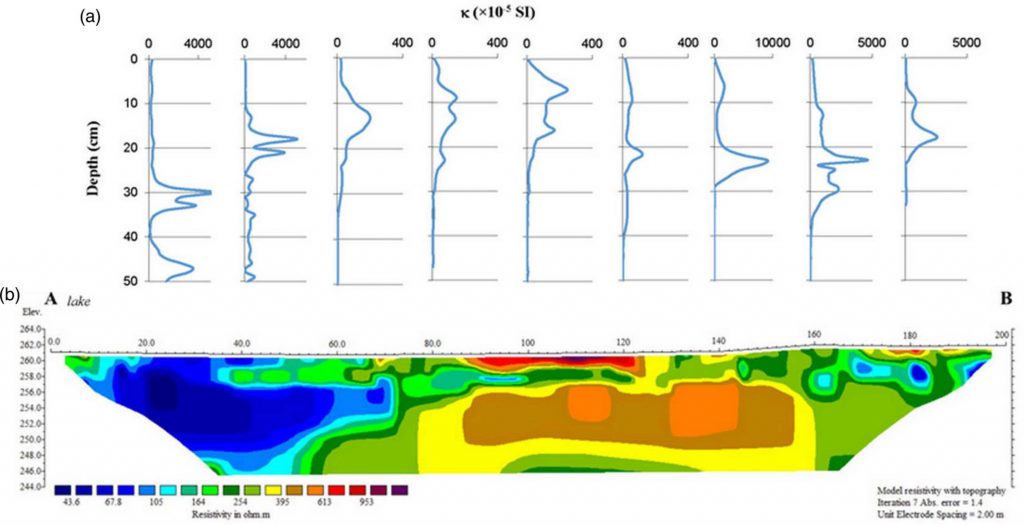Interesting results of the research, conducted under the NCN project by scientists from the Institute of Earth Sciences of the University of Silesia and the Institute of Environmental Engineering of the Polish Academy of Sciences, have been already published in the journal of the Land Degradation and Development. The studies were carried out in the recreational areas of the municipal park in Blachownia near Częstochowa, Poland. The results of a combination of geophysical measurement methods: soil magnetometry, resistivity tomography (Fig.1), and electromagnetic profiling showed that a significant part of the park is established on a thin (approx. 0.1 m) layer of soil developed on highly magnetic material coming from the local smelter and iron foundry. Thermomagnetic analyzes showed that the sources of extremely high magnetic susceptibility of waste were magnetite and metallic iron (αFe). Geophysical research allowed to determine the range, thickness, and depth of the metallurgical waste layer. The chemical analysis of waste samples collected from indicated sites has shown that high concentrations of Fe and Mn are not accompanied by other, potentially toxic metals and at high pH values (6.5-9.0) noticed, the waste does not cause a significant ecological threat.
Magiera T., Żogała B., Łukasik A., Pierwoła J. (2021). Application of different geophysical techniques to study Technosol developed on metallurgical wastes; Land Degradation and Development; 1-11; DOI 10.1002/ldr.3846






